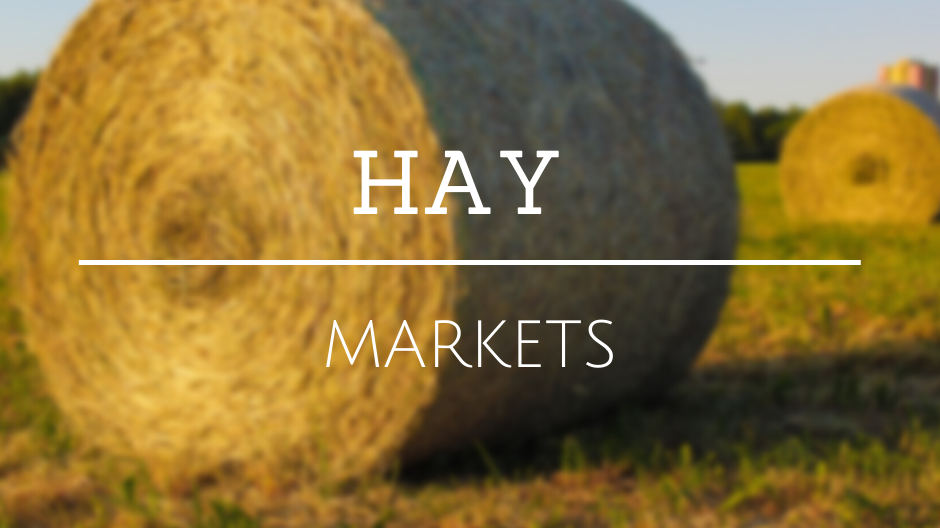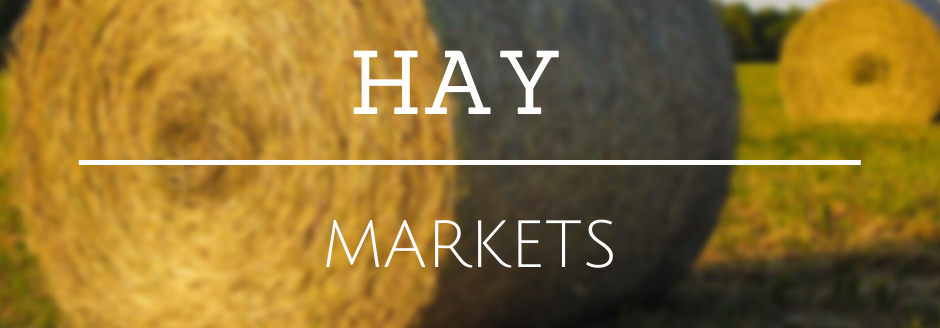Colorado—In the Sept. 28 report, compared to last report, trade activity and demand light. Corn silage harvest is in full swing, reducing trade activity on new hay. Buyers in the northern part of the state have reduced bid offers on alfalfa hay during silage harvest until they can assess their feed stockpiles for the rest of the year. Recent weather conditions have allowed growers to greatly improve the quality of hay put up for second and third cutting alfalfa. Growers are reporting an increase in acres of forage sorghums, triticale, forage wheats, and golden german millet to increase feed stockpiles this year. According to the NASS Colorado Crop Progress report for week ending Sept. 24, alfalfa hay third cutting is 80% complete; fourth cutting is 11% complete.
Missouri—In the Sept. 28 report, compared to last report, hay prices are steady and demand is moderate. Hay business continues to take a back seat for the time being in most of the state as grain harvest in is full swing. Supplies remain light to moderate and although many have worked to acquire anticipated winter feeding needs it would be very unusual for interest not to pick back up once there is a serious chill in the air. Drought conditions worsened slightly once again this week as moisture evades many areas. Average first frost dates are only a few weeks away now so days of any additional grass growth are limited.
Nebraska—In the Sept. 28 report, compared to last report, alfalfa bales sold steady, grass hay steady to $10 lower, dehydrated alfalfa pellets and ground and delivered hay steady. Demand was light to moderate. Harvest is getting in full swing and calves just starting to make there way from the pasture to weaning pens. Hay sellers thought they would be a little busier than they are shipping hay to backgrounders and feedlots. With October just around the corner more than likely hay movers will be busy. Quite a few talks on new crop corn bales with limited prices set as of this writing. The early bird gets the worm theory comes into play on cornstalks, seems like the first few sales are the high for the season.
Oklahoma—In the Sept. 29 report, compared to the last report, hay is slow to steady. Very little movement across Oklahoma. The state did receive some rainfall throughout most of the state, but we still need some widespread rain as we head into our fall season. Next report will be released Oct. 13.
Texas—In the Sept. 22 report, compared to the last report, hay prices are mostly steady across the majority of the regions with quality being the largest determinant on price. Hay supplies are most likely going to be short again this year due to lack of moisture during the growing season and excessive heat. Buyer demand is high due to deteriorating range conditions. According to USDA reports, topsoil moisture is short or very short across 59% of Texas and 67% of the subsoil moisture is short to very short. More than 71% of the pasture and rangeland is in poor to very poor condition in Texas. Next report will be released Oct. 6.
South Dakota—In the Sept. 29 report, compared to last report, alfalfa hay steady. Moderate demand from local hay buyers, best demand from out of state dairies in need of high testing alfalfa. Good demand for grass hay as calves will be arriving in feedyard pens and need high quality, long stemmed hay to get them coming to the bunk.
New Mexico—In the Sept. 29 report, compared to last report, alfalfa hay steady. Trade active, demand good. The the state is 95% complete with third cutting, 84% complete with fourth cutting and 4% with fifth cutting. Some parts of the state have received scattered showers. According to New Mexico Crop Progress report as of Sept. 24. Hay and roughage supplies were reported as 13% very short, 31% short, 51% adequate, and 5% surplus. Stock water supplies were reported as 10% very short, 25% short, 63% adequate, and 2% surplus.
Wyoming—In the Sept. 28 report, compared to last report, all reported hay sales sold steady. Demand was light to moderate. The best demand has been on small square bales in the western area of the state. Some producers are starting on beet harvest and when that is completed, they will turn back to selling hay to local customers. Some producers have finished mowing fourth cutting alfalfa in the east and second or third mowed and getting ready to bale in the west. Most hay producers will proceed until a killing frost is showing up on the 10-day weather outlook.
Montana—In the Sept. 29 report, compared to last report, hay sold generally steady. Hay sales were light this week as most producers are busy with harvest. Demand for hay remains light for local hay and mostly moderate for hay to ship out of the state. Rain or the forecast of rain continues to make putting up hay difficult as many struggle to find a big enough window to cut and dry hay. Heavy supplies of rained on or mature hay remain on the market. Demand for dairy quality, high test hay is mostly good. Limited sales sold to eastern dairies this week. Demand for straw is moderate. Heavy straw supplies are weighing on the market as a new tillage technique has pushed more producers to put up bails instead of spreading straw.

